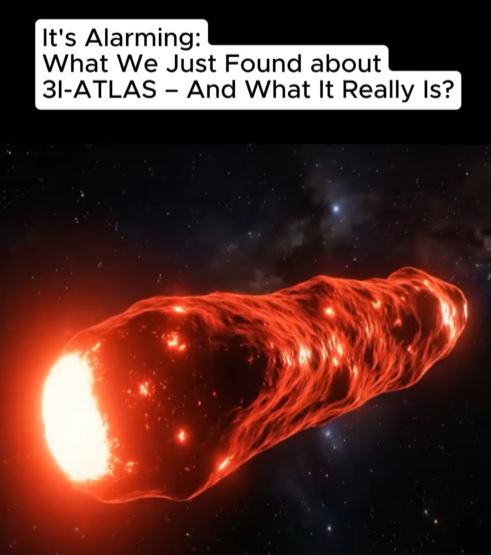Astronomers are stunned after new data revealed that 3I-ATLAS, the mysterious object hurtling through our solar system, might not be what scientists initially thought. First spotted by the ATLAS (Asteroid Terrestrial-impact Last Alert System) telescope network, this fiery, cigar-shaped visitor has left researchers questioning whether it’s a natural cosmic traveler — or something far more extraordinary.
When 3I-ATLAS was first discovered, experts believed it to be another interstellar comet, similar to Oumuamua or Borisov, both of which baffled scientists with their strange trajectories. But the latest readings from multiple observatories have raised eyebrows: this object is moving too fast, too erratically, and appears to emit a glow unlike any known asteroid or comet.
Dr. Eleanor Wright, an astrophysicist at the European Space Agency, called the findings “deeply unsettling.” According to her team, 3I-ATLAS’s composition doesn’t match any celestial body ever recorded. “Its surface reflects light in a way that suggests metal-like properties — and its thermal readings don’t fit with ice, rock, or dust,” she said. “It’s as if this object is generating its own heat source.”
The revelation has reignited debates among scientists — and conspiracy theorists alike. Could 3I-ATLAS be an alien probe? While mainstream researchers remain skeptical, others point out eerie similarities to past unexplained interstellar visitors. “This isn’t just another rock flying through space,” one researcher commented anonymously. “Its speed, shape, and behavior suggest there’s something more — maybe even artificial design.”
NASA has officially confirmed that 3I-ATLAS is on a hyperbolic trajectory, meaning it came from outside our solar system and will likely never return. Yet what alarms experts most is its acceleration pattern — the object appears to be speeding up as it moves away from the Sun, something that cannot be explained by gravity alone.
In 2017, Oumuamua displayed the same mysterious behavior, prompting theories that it could have been a defunct alien spacecraft or solar sail. Now, years later, 3I-ATLAS seems to be repeating history — only this time, the signals are stronger and stranger.
Social media has exploded with speculation. Some believe it’s a fragment from a distant star system; others insist it’s an alien artifact scanning our solar system. “They’re back to check on us,” one viral post joked, gaining millions of views overnight.
Still, astronomers are approaching the mystery cautiously. “We must rely on science, not speculation,” said Dr. Martin Leone from Harvard’s Center for Astrophysics. “While it’s tempting to assume the extraordinary, we must gather every piece of data before drawing conclusions.”
NASA plans to release a full analysis in the coming weeks, but one thing is certain — 3I-ATLAS has already captured humanity’s imagination. Whether it’s a rare interstellar object or something much more profound, its presence serves as a reminder that the universe still holds secrets beyond our wildest understanding.











Leave a Reply